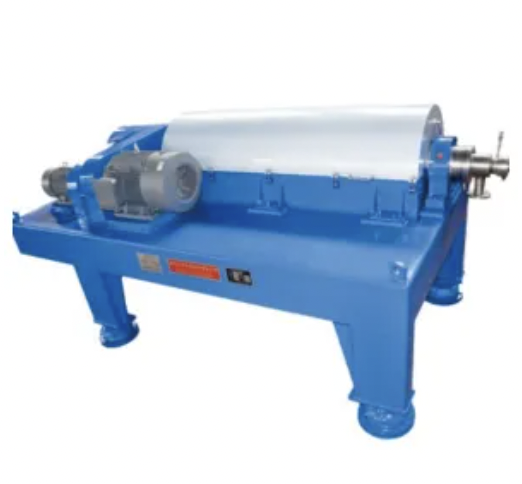Storage Tank Cleaning Operations
Centrifugation Techniques for Sludge Removal
Centrifugation stands out as one of the most effective methods for cleaning storage tanks when dealing with sludge buildup. The process works by spinning materials at very high speeds, separating heavier solid particles from liquid components according to their densities. What makes this approach work so well is that it directly tackles the main issue with sludge accumulation - getting rid of those pesky waste particles stuck inside tanks. Different centrifuge models like disc-stack and tubular versions actually boost performance even further. These variations allow operators to clarify wastewater while concentrating the solid waste material at the same time. Because there are so many different designs available, plant managers can pick equipment suited specifically to whatever kind of sludge they're dealing with on any given day. From an economic standpoint, these machines save money too. They cut down on what needs to be disposed of and reduce the amount of time tanks need to be offline during maintenance cycles. Real world experience shows that facilities using centrifugal systems consistently meet environmental regulations around proper waste handling, something that remains absolutely essential for anyone running industrial operations involving sludge treatment.
Robotics-Based Automated Tank Cleaning Systems
Automated tank cleaning robots are changing the game for industrial maintenance work, using smart tech to make things safer and faster. These machines cut down on workers needing to enter dangerous spaces filled with chemicals or debris, which means fewer accidents during cleanups. When companies install AI powered systems, they see real results - cleaning operations take less time but still get the job done properly. The robots handle tight spots inside storage tanks where humans would struggle, particularly useful in places like oil refineries and chemical plants. Businesses that switched to robotic solutions report better efficiency across their operations, with maintenance periods getting shorter and fewer incidents happening. Tank operators tell similar stories about how switching to robot cleaners reduced accident numbers and made maintenance checks much smoother overall, proving why this tech is becoming standard practice in modern waste management setups.
Drilling Waste Management Systems
Oilfield Centrifuge Applications in Waste Processing
Oilfield centrifuges play a vital role in processing drilling waste efficiently. These robust machines separate oil, water, and solid particles from the mud created during drilling, which is essential for proper waste management. What makes these centrifuges so effective? They generate intense g-forces that help separate materials even when dealing with tricky mixtures of different viscosity levels and densities. Companies using this technology see better recovery rates of valuable hydrocarbons from their waste streams, something that fits well with modern sustainability goals. Beyond just solving environmental issues, this method actually helps the industry save money too. When operators recover usable materials instead of disposing of everything, they cut costs while running operations in a way that's friendlier to the planet over time.
Drilling Mud Centrifuge Integration
When centrifuge systems get incorporated into the drilling mud process, they really boost both how well drilling works and how clean the operation stays. These machines keep an eye on mud properties throughout the whole process, which means operators can tweak things as needed for better results during extraction. What makes them so valuable is their ability to cut down on waste because they let companies recycle most of their drilling fluids instead of just throwing them away. We've seen this work across different sites where operators save money while keeping their environmental footprint smaller than before. For companies looking at long term sustainability, investing in good centrifuge systems isn't just about following regulations anymore it shows real dedication to making oil and gas drilling cleaner practices overall.
Mechanical Separation Technologies
Decanter Centrifuges for Efficient Sludge Treatment
Decanter centrifuges play a key role in sludge treatment operations where they separate liquid from solid waste using gravity and centrifugal force. These machines work particularly well for handling oily sludge in industrial settings, offering better separation than many other methods. The improved separation helps recover valuable materials while cutting down on what needs to be disposed of. Research shows these centrifuges make wastewater much cleaner after processing, meeting even strict environmental regulations for discharge. Many plants report significant cost savings when switching to this technology. For companies looking at long term sustainability, investing in decanter centrifuges makes both economic and environmental sense.
Solvent Extraction in Industrial Waste Management
Solvent extraction is becoming increasingly important in how industries handle waste, especially when trying to pull valuable stuff out of oily sludge. The method works by using selective solvents to separate out organic materials from what's left behind after processing. This separation makes it possible to recover resources that would otherwise go to waste. Research shows that companies using solvent extraction tend to recycle much more material than those relying on traditional methods, which means fewer trips to landfills. For businesses looking at their bottom line as well as their environmental impact, solvent extraction isn't just helpful it's practically necessary these days.
Thermal Treatment Applications
Pyrolysis Technology for Resource Recovery
Pyrolysis tech represents something pretty special when it comes to turning organic stuff into things we can actually reuse again like oils, gases, and even solid char material. The whole thing works by heating up these materials without any oxygen present, which breaks down those stubborn hydrocarbons in sludge and other oily wastes. Studies show that about 90% or so gets converted through this method, which is actually quite impressive compared to many alternatives out there today. What makes pyrolysis stand out isn't just how well it handles waste treatment though. Companies are finding they can recover all sorts of useful energy products too. Given these numbers, it's no wonder why so many waste management operations now consider pyrolysis their go-to solution for dealing with problematic oily residues that would otherwise cost tons of money to dispose properly.
Heat-Based Hydrocarbon Separation Methods
Thermal separation methods use heat to make sludge easier to work with, helping separate valuable hydrocarbons from solid waste materials. Common approaches include thermal desorption processes and controlled burning techniques that serve dual purposes for waste handling and generating usable energy at the same time. When companies install effective heat-based separation equipment, they typically see reduced operational expenses along with better material recovery rates. The process fits well within modern sustainability goals because applying heat turns what would otherwise be waste into something useful for energy production, creating real value from what was once considered trash. Many facilities have found that setting up these kinds of systems helps tackle their waste problems while simultaneously making better use of available energy resources, striking a practical balance between protecting the environment and keeping operations running smoothly.
Biological Treatment Innovations
Bioremediation Processes in Oil Sludge Breakdown
Bioremediation works by employing living organisms like certain types of bacteria and fungi to break down harmful stuff in oil sludge. It's basically nature doing what it does best to clean up messes humans make. When researchers create the right environment for these microbes to grow, they start eating away at those tough hydrocarbon compounds pretty quickly. This helps bring back balance to areas where oil contamination has damaged ecosystems. Some field tests actually recorded breakdown rates between 80% and 90% in real world conditions, which makes a big difference when trying to clean polluted soil or groundwater. For companies dealing with oil waste problems, this method represents both an environmentally responsible option and a cost effective way forward compared to traditional chemical treatments that often leave behind their own issues.
Oil sludge usually contains varying proportions of crude oil mixed with solids and water from drilling operations. Left unhandled, this messy substance creates serious environmental problems that require strict handling protocols for proper disposal. Bioremediation has become a go-to solution among various biological treatments for tackling the ongoing issue of oil sludge buildup across the petroleum sector. The process relies on microbes breaking down hydrocarbons through natural biochemical reactions, which helps minimize environmental damage. This approach fits well with modern waste management goals focused on making better use of resources while protecting ecosystems against contamination from industrial byproducts.
Bioaugmentation Strategies for Enhanced Degradation
Bioaugmentation plays a key role in treating oil sludge through biology, basically adding certain microbes to speed up how oil pollutants break down. The method really boosts bioremediation efforts, especially when dealing with super contaminated sludge samples from drilling sites or refinery operations. Finding the right mix of microorganisms makes a big difference in how fast things decompose. Treatment plants have seen real results too - projects finish faster and produce cleaner outputs after implementing these microbial solutions. Looking at actual field tests across different regions shows this approach works well in practice. For waste managers handling oily residues day after day, bioaugmentation isn't just theory anymore. It represents real progress in tackling one of the toughest challenges facing environmental cleanup today.
The technique typically adds either individual bacterial strains or groups of microbes working together to speed up how fast hydrocarbons break down naturally. Bioaugmentation works similarly to bioremediation methods, relying on what microbes already do best metabolically to fight pollution and help restore damaged ecosystems. When companies implement these approaches, they significantly cut down on dangerous waste problems while finding better ways to manage oil sludge throughout the petroleum sector. Practical results show waste treatment facilities see real gains in how well their systems work day after day, making it easier for environmental protection efforts to gain traction across industrial operations.
FAQ
What are the benefits of using centrifugation techniques in sludge removal?
Centrifugation techniques for sludge removal are highly efficient, reducing waste disposal volumes and minimizing downtime. They provide significant cost savings and ensure compliance with waste handling regulations. The process also optimizes waste management operations by separating and removing waste particles.
How do robotics-based automated tank cleaning systems work?
Robotics-based automated systems use AI and machine learning to optimize tank cleaning procedures. They reduce human exposure to hazardous environments, improve operational efficiency, decrease downtime, and lower risks during maintenance. This advanced technology is particularly effective in confined and complex environments.
What role do oilfield centrifuges play in waste processing?
Oilfield centrifuges separate oil, water, and solids from drilling waste, which helps in resource recovery and reduces environmental impact. By enhancing the recovery rates of hydrocarbons, these centrifuges align with sustainable waste management practices and contribute to resource optimization.
How does bioaugmentation enhance oil sludge degradation?
Bioaugmentation involves adding specific microbial strains to accelerate the breakdown of oil contaminants. This method enhances the bioremediation process, reducing treatment times, and improving recovery outputs. It is a significant advancement in oil sludge management, promoting cleaner, sustainable solutions.

